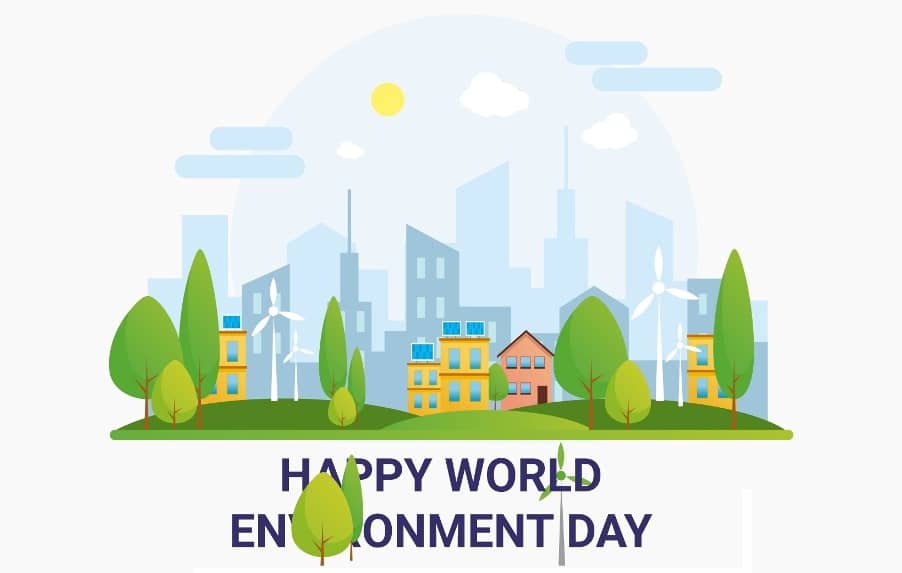The event has grown to become a global platform for public outreach that is widely celebrated in over 100 countries.
June 5th is observed as World Environment Day to generate awareness and encourage conscious efforts by the governments, organizations and individuals towards protection of the environment. First held in 1974, the event has grown to become a global platform for public outreach that is widely celebrated in over 100 countries. India is the global host this year and the theme for 2020 World Environment Day is“Celebrate Biodiversity”World Environment Day 2020 calls for urgent action to protect biodiversity. Biodiversity describes the variety of life on Earth. It encompasses the 8 million species on the planet–from plants and animals to fungi and bacteria; the ecosystems that house them; and the genetic diversity among them. Biodiversity may be seen as an intricate web, in which each part is interdependent. When one component is change or removed the entire system is affected, and this can produce positive or negative consequences.
The Common Good
Nature responds to some of the most pressing challenges faced by humans today. It provides us with oxygen, purifies the water we drink, ensures fertile soil, and produces the variety of foods we require to stay healthy and resist disease. It enables medical researchers to understand human physiology; and offers substance for developing medicines. It is the foundation of most industries and livelihoods. It even helps mitigate the impact of climate change by storing carbon and regulating local rainfall. Life on earth would not be possible without nature’s services. It is our greatest common good.
There are lots of activities that held on this day by people in the Environment to develop new innovative things for the welfare of the people as well as the environment. The environment is a natural thing which we use to live and to do a lot of activities for our own benefit and welfare.
The Demands Backfire
With our increasing demands, humans have pushed nature beyond its limit. In the last 50 years, the human population has doubled; the global economy has almost quadrupled and global trade has increased by about ten times. It would take 1.6 Earths to meet the demands that humans make of nature each year.
The emergence of COVID-19 has underscored the fact that, when we destroy biodiversity, we destroy the system that supports human life. By upsetting the delicate balance of nature, we have created ideal conditions for pathogens including corona virus to spread.
We are intimately interconnected with nature. If we don’t take care of nature, we can’t take care of ourselves.
Time to bring a Positive Change
Following the decisions taken by UN Member States in the Convention on Biological Biodiversity (Given Below), UNEP and its partners are launching the UN Decade on Ecosystem Restoration (2021–2030), a global initiative to restore the relationship between humans and nature. UNEP is also working with world leaders to develop a new and ambitious Post-2020 Global Biodiversity Framework to realize a 2050 Vision of Living in Harmony with Nature.
Living in harmony with nature can only be achieved if we reverse negative impact of biodiversity loss and pursue full implementation of the 2030 Agenda for Sustainable Development. World Environment Day celebrations will help build momentum and unite the global community in actions for positive change.
Each Contracting Party shall, as far as possible and as appropriate: (Full Preamble Here)
(a) Establish a system of protected areas or areas where special measures need to be taken to conserve biological diversity:
(b) Develop, where necessary, guidelines for the selection, establishment and management of protected areas or areas where special measures need to be taken to conserve biological diversity:
(c) Regulate or manage biological resources important for the conservation of biological diversity whether within or outside protected areas, with a view to ensuring their conservation and sustainable use;
(d) Promote the protection of ecosystems, natural habitats and the maintenance of viable populations of species in natural surroundings:
(e) Promote environmentally sound and sustainable development in areas adjacent to protected areas with a view to furthering protection of these areas:
(f) Rehabilitate and restore degraded ecosystems and promote the recovery of threatened species, inter alia, through the development and implementation of plans or other management strategies:
(g) Establish or maintain means to regulate, manage or control the risks associated with the use and release of living modified organisms resulting from biotechnology which are likely to have adverse environmental impacts that could affect the conservation and sustainable use of biological diversity, taking also into account the risks to human health:
(h) Prevent the introduction of, control or eradicate those alien species which threaten ecosystems, habitats or species:
(j) Subject to its national legislation, respect, preserve and maintain knowledge, innovations and practices of indigenous and local communities embodying traditional lifestyles relevant for the conservation and sustainable use of biological diversity and promote their wider application with the approval and involvement of the holders of such knowledge, innovations and practices and encourage the equitable sharing of the benefits arising from the utilization of such knowledge, innovations and practices:
(k) Develop or maintain necessary legislation and/or other regulatory provisions for the protection of threatened species and populations:
(l) Where a significant adverse effect on biological diversity has been determined pursuant to Article 7, regulate or manage the relevant processes and categories of activities: and
(m) Cooperate in providing financial and other support for in-situ conservation outlined in subparagraphs (a) to (1) above, particularly to developing countries.
What can you do to save the Biodiversity today?
Protect natural habitats
human impact on the earth can have a devastating impact on biodiversity. Small steps like keeping to walking paths, and not stepping through flowers or crops, can help protect what is growing there.
Conserve your water use
fresh bodies of water are essential to biodiversity. Reducing the amount of water, you use, by having a 5-minute shower or not running the water when washing up the dishes, can help protect vital wetlands. Plant scientists are also working to help conserve by developing crop varieties that use less water.
Reduce, reuse and recycle
recycling lessens pollution by decreasing energy, electricity, and water consumption and the need for landfills. Not only can you recycle bottles and cans, but your local recycling center will usually allow you to recycle clothes, electrical goods and batteries. Programs around the world have collected and recycled almost 800,000 metric tons of empty pesticide containers and agricultural plastics in the last thirteen years. That is more than the weight of 100 eiffel towers.
Support farmers
farmers play a key role in conserving biodiversity. With the help of biotechnology and plant science, farmers can grow more food on the same amount of land. This takes the pressure off the need to convert natural habitats into farmland.
Buy local foods when you can
buying from your local farmer at a farmers’ market or through a farm stand gives you the ability to find out how your food was grown and learn what they are doing on the farm to help conserve biodiversity.
Donate
botanical gardens are great for biodiversity conservation, as scientists can store, study and grow plants in their native habitats. Donating to your local botanical garden will help them continue to protect and promote biodiversity.
Educate yourself and those around you
educating people about the importance of biodiversity conservation increases public awareness of the issue. As public awareness increases, people become more involved in caring about their environment.
Conclusion
At SLTL we focus on encouraging and implementing various methods, as a team, to contribute towards enriching our environment to achieve sustainability. We tend to create a balance between the resources that we utilize for our manufacturing units by undertaking activities such as Tree Plantation, Solar Energy Practice, Digitalization of processes to save paper and many other green initiatives like indoor plantation, recycling of waste, using LED Light Bulbs to save energy and also building awareness for the same.
Specifically, at our Medical Unit, we use Solar Energy for our day-to-day requirements, which undergo continuous maintenance to provide efficiency and ultimately cutting down the input of non-renewable electricity, thus focusing towards a sustainable future. Along with Solar Energy Utilization, we also focus on Tree Plantation, particularly at our manufacturing plant to have a healthy and safe environment.
Take the right step today, for a longer and a sustainable future.






